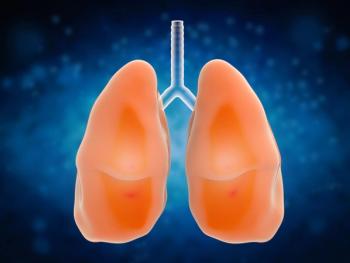
ODAC Votes 6-2 For Benefit-Risk Profile of SQ Daratumumab in High-Risk Smoldering Multiple Myeloma
Based on the trial population and end point criteria, ODAC voted for daratumumab and hyaluronidase-fijh injection for SQ use in high-risk smoldering multiple myeloma.
The FDA’s Oncologic Advisory Drug Committee (ODAC) voted 6-2 in favor of the notion that results from the phase 3 AQUILA trial (NCT03301220) provide sufficient evidence to support a favorable benefit-risk profile for subcutaneous daratumumab and hyaluronidase-fihj (Darzalex Faspro) as a treatment for patients with high-risk smoldering multiple myeloma.1
Previously, on November 8, 2025,
Data for daratumumab and hyaluronidase-fihj in high-risk smoldering multiple myeloma came from the AQUILA trial that evaluated whether subcutaneous daratumumab prolonged progression-free survival (PFS) vs active monitoring. Results from the trial were published in the New England Journal of Medicine.5
The AQUILA trial
With a median follow-up of 65.2 months (range, 0-76.6), 34.5% of patients in the daratumumab group and 50.5% of patients in the active monitoring group experienced progression to active multiple myeloma or death (HR, 0.49; 95% CI, 0.36-0.67; P <.001). At 5 years, the PFS rate was 63.1% with daratumumab and 40.8% with active monitoring. The median time to the occurrence of disease progression was 44.1 months in the daratumumab group and 17.8 months in the active monitoring group (HR, 0.51; 95% CI, 0.40-0.66).
A complete response or better was experienced by 8.8% of patients in the daratumumab group and 0 patients in the active monitoring group; a very good partial response or better was experienced by 29.9% and 1.0%, respectively.
At the time of clinical cutoff, first-line multiple myeloma treatment had been initiated in 33.2% of patients in the daratumumab group and 53.6% in the active monitoring group (HR, 0.46; 95% CI, 0.33-0.62). The estimate for the initiation of first-line treatment, at 5 years, was 29.7% in the daratumumab group and 55.9% in the active monitoring group.
Also, at the time of clinical cutoff, overall survival (OS) at 5 years was 93.0% in the daratumumab group and 86.9% in the active monitoring group; 7.7% (n = 15) and 13.3% (n = 26), respectively, had died (HR, 0.52; 95% CI, 0.27-0.98).
Patients in the trial received 1800 mg of subcutaneous daratumumab coformulated with recombinant human hyaluronidase PH20 weekly for cycles 1 and 2, then every 2 weeks for cycles 3 through 6, then every subsequent 4 weeks in 28-day cycles.
Eligible patients were 18 years or older with a confirmed diagnosis of smoldering multiple myeloma, via International Myeloma Working Group (IMWG) criteria, within the past 5 years; measurable disease; and an ECOG performance status of 0 or 1. Patients were also required to be at high risk for progression to active multiple myeloma. It was noted during the ODAC meeting that these high-risk criteria were under contention.
The trial’s primary end point was PFS. Secondary end points include overall response and complete response, as well as disease progression assessed with IMWG biochemical or SLiM-CRAB criteria, the initiation of first-line treatment for active multiple myeloma, and death from any cause.
Regarding safety, grade 3 or 4 adverse events (AEs) occurred in 40.4% of patients in the daratumumab group and 30.1% of the active-monitoring group. The most common AEs of any grade were fatigue (34.2% and 13.3%, respectively), upper respiratory tract infection (30.1% and 7.7%), and diarrhea (27.5% and 5.1%); the most common AE of grade 3 or 4 was hypertension (5.7% and 4.6%).
The ODAC Meeting
The FDA noted that, when judged via the Mayo 2018 risk model, less than half of the trial participants would have been considered high-risk. The protocol-defined definition of high-risk smoldering multiple myeloma did not “completely align” with other available high-risk models.
In the AQUILA trial, even after patients were diagnosed with multiple myeloma, 20% did not receive treatment. Of those who did receive treatment, the FDA noted that there was a wide range of time to the initiation of therapy.
Regarding trial end points, though the trial met the primary end point of PFS, the FDA noted several limitations: the delay of multiple myeloma diagnoses, the majority of events were SLiM criteria as opposed to symptomatic CRAB criteria or death, and approximately 20% of patients did not initiate multiple myeloma therapy.
References
- May 20-21, 2025 Meeting of the Oncologic Drugs Advisory Committee (ODAC) - Day 1. Streamed live May 20, 2025. Accessed May 20, 2025. https://tinyurl.com/25e3rr2x
- Johnson & Johnson submits applications in the U.S. and EU seeking approval of DARZALEX FASPRO® / DARZALEX® as subcutaneous monotherapy for high-risk smoldering multiple myeloma. News release. Johnson & Johnson. November 8, 2024. Accessed November 8, 2024. https://tinyurl.com/4wkve363
- FDA approves daratumumab and hyaluronidase-fihj for multiple myeloma. News release. FDA. May 1, 2020. Accessed May 20, 2025. https://tinyurl.com/3mmjsyyz
- DARZALEX FASPRO® (daratumumab and hyaluronidase-fihj) becomes the first FDA-approved treatment for patients with newly diagnosed light chain (AL) amyloidosis. News release. Johnson&Johnson. January 21, 2021. Accessed May 20, 2025. https://tinyurl.com/bda3nt6z
- Dimopoulos MA, Voorhees PM, Schjesvold F, et al. Daratumumab or active monitoring for high-risk smoldering multiple myeloma. N Engl J Med. 2025;392(18):1777-1788. doi:10.1056/NEJMoa2409029
Newsletter
Stay up to date on recent advances in the multidisciplinary approach to cancer.


















































































